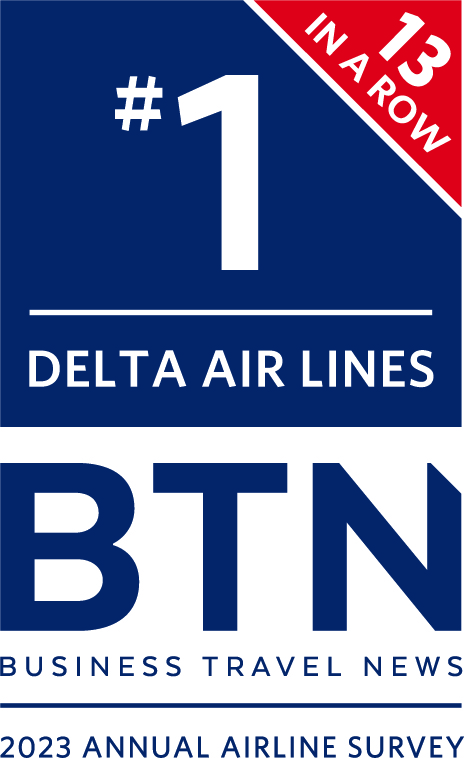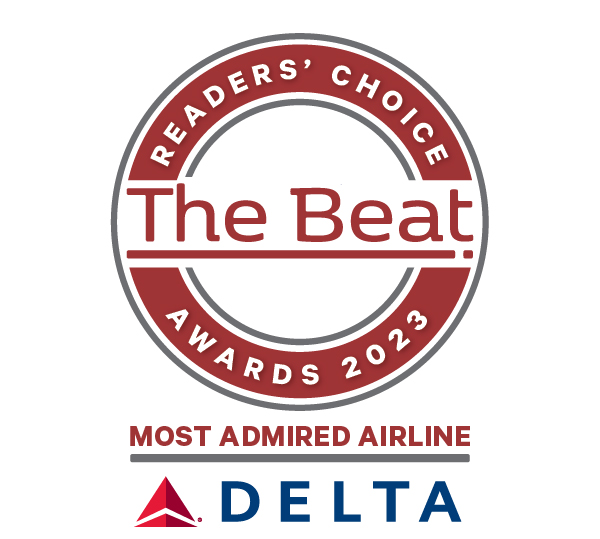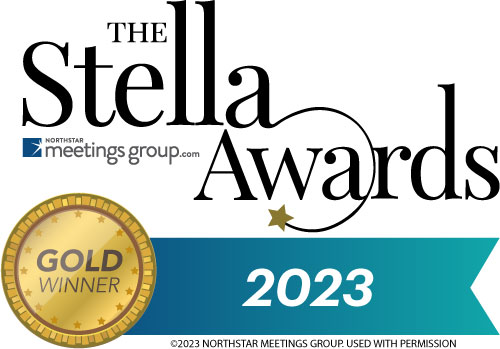
Infants & Children

Helpful Hints For Infant (Less Than 2 Years Old) Travel
Infants In Arms
Infants and children less than 2 years old may travel for free within the U.S. if an adult (18 years or older) holds the infant in arms or places the infant in
Infants and small children must be accompanied by someone who is at least 18 years
International Flights
If a customer is traveling with an infant and their travel destination requires a passport and/or travel visas, the customer will need to secure a passport for the child. If a customer is traveling alone with children, foreign border officials may require custody documents or notarized written consent from the other parent. Check with the embassy at
Adding Infant Name and SSRs to a PNR – Sample GDS Entries
Amadeus
Infant Name Field: NM1CORE/ALAN MR (INF/WILLIAM/04JUN07)
Adding Infant on adult ticket already issued: 2/(ADT) (INFMILLER/TIMOTHY/21OCT10)
- If the Infant Passenger Type is specified within a name element, the system automatically creates Infant SST elements to be sent to the appropriate airlines
- If the Infant Passenger Type has not been specified in a name element, add an Infant SSR element manually. Infant SSR elements must be passenger- and segment-associated
Note: At least one air segment must be present in the PNR before the INFT SSR element can be added.
For an infant not occupying a seat, use the format:
SRINFT-JONES/THOMAS04JUN10/P2
SYSTEM RESPONSE:
10 SSR INFT LH NN1 JONES/THOMAS 04JUN10/S2
----------------------------------------------------------------------------------------------------------------------------------
Travelport (Apollo, Galileo and Worldspan)
1. Create Name Field -WALL/JOSEPH/SUSAN*ADT/INF
2. Sell the space only for the non-infants
3. Add the SSR 3SAN1.1INFT-2.1/01SEP09
Please note: 1.1 is the adult passenger, 2.1 is the infant / the date of birth of the infant
-----------------------------------------------------------------------------------------------------------------------------------
Sabre
Step 1: Add the Infant Name
- Add a single infant name field not occupying a seat: -I/(last name)/(first name)
- Add multiple infant names not occupying a seat: -I/(number of infants)(last name)/(first name)/(first name)/(first name)
- Add a single infant name field occupying a seat: -(last name)/(first name)
- Add multiple infant names occupying seats: -(number of infants)(last name)/(first name)/(first name)/(first name)
Step 2: Add the Infant SSR Message
- Add the Infant SSR message for an infant not occupying a seat: 3INFT/(infant's last name)/( infant's first name)/(date of birth:DDMMMYY)-(adult's name field)
- Add the Infant SSR message for an infant occupying a seat: 3INFT/(infant's last name)/( infant's first name)/(date of birth: DDMMMYY)/OS-(infant's name field)
Step 3: Add the Infant SSR Secure Flight details
- Add the Secure Flight SSR message for an infant not occupying a seat: 3DOCS(assume all segments)/DB/(date, month, year of birth:DDMMMYY)/( infant gender code)/(mandatory last name)/(mandatory first name)/(optional middle or second name, or initial)-(PNR name number)
- Add the Secure Flight SSR message for an infant occupying a seat: 3DOCS(assume all segments)/DB/(date, month, year of birth:DDMMMYY)/(regular gender code)/(last name)/(first name)/(middle or second name, or initial)-(PNR name number for passenger)
---------------------------------------------------------------------------------------------------------------------------
The entries above are subject to change without notice. Please check with your GDS Help Desk if you find the above ticketing entries are incorrect. Delta is not liable for incorrect ticketing and any applicable debit memos associated with an incorrect ticketing entry.
---------------------------------------------------------------------------------------------------------------------------
Questions
For additional information or questions regarding the GDS entries above, please contact the appropriate GDS Help Desk for assistance.
Ticketing Requirements
A zero value ticket is required for travel on/after December 12, 2017, when:
- The infant is less than two years old, AND
- There is an accompanying adult at least 18 years old or the infant's legal guardian, AND
- Travel is within the U.S. or travel is between the U.S. and Puerto Rico or the U.S. Virgin Islands
A purchased ticket is required when:
- A child is age two or older.
- The child is to sit in a seat in order to travel in an approved restraint.
- A customer is traveling with a second child, regardless of age, and has a lap-child
- A customer wants
child to earn SkyMiles.
- A customer will be traveling between countries regardless of whether or not the child occupies a seat.
NOTE: Number of Infants per Adult—a limit of two infants, less than two years old, per adult may travel together.
International Taxes & Fees—For infants under the age of two and held in the adult's lap, the cost is usually about 10% of the adult fare plus any international taxes and surcharges, which can be significant.
Child Fares & Special Discounts
Travel within the Domestic U.S.
Delta does not offer discounted infant or child fares for travel within the domestic U.S.
Travel between countries
Discounted child fares may be available when traveling outside the U.S. or when traveling between certain countries. The price of the ticket will depend on the age of the child. Taxes & fees may also apply to infants held in the adult's lap.
Seat Assignments
Traveling with an infant restricts a customer’s ability to occupy some seats due to FAA regulations. To make sure both customer and infant are safe and comfortable during the flight, review Infant and Child Seating and Aircraft Types and Layout for more information.
Infant Baggage
Review the Infant and Children’s Baggage section for specific information on carry-on items such as child restraint seats, strollers, and diaper bags. During security check-in, the TSA will usually make a special provision for items such as medications and baby formula.
Approved Child Restraints
All child restraints have labeling that shows whether or not the restraint meets certain safety requirements. The label has a circle surrounding the letter "e" followed by the distinguishing number granting
Labeling Specifics
If a restraint was manufactured within the U.S. after 2/25/85, it needs to have the following labeling to be approved for Delta flights:
- Conforms to all applicable federal motor vehicle standards
- Is certified for use in motor vehicles and aircraft.
If a restraint was manufactured outside the U.S., it needs to have the following labeling to be approved for Delta flights:
- Has the approval of a foreign government
- Was manufactured under standards of the United Nations (UN).
Child Restraints that are Not Permitted
Delta does not permit the following types of car seats:
- Booster seats-even if they bear labels indicating they meet U.S., UN, or foreign government standards.
- Vest and harness-type child restraint devices other than the FAA approved CARES restraint device.
Aboard The Aircraft
A customer may place an infant in an adjacent unoccupied seat after taxi, take-off, and landing if the seat remains open and the customer is using
Seating for a Child Restraint (CRS)
The window seat is the preferred location for an approved CRS; however, an approved CRS may be used in any seat as long as it does not block other row occupants from accessing the aisle, except for the following:
- Any seat in an emergency exit row
- Any row immediately forward or behind an exit row
- Any seat facing towards the back
- Any bulkhead seat when the car seat base is
from a combination car seat/stroller
- Flat-bed seats: All types of child restraint devices (CRS) – including the CARES harnesses – are never permitted in flat-bed Delta One and First Class seats
For a three-seat configuration, if a child is placed in a restraint and occupies the middle seat of a single-aisle aircraft, the accompanying adult must sit in the window seat, unless the window seat remains vacant throughout the entire flight, then the accompanying adult may sit in the aisle seat. This leaves the aisle seat open for other customers, allowing easier access to the seat and to the aisle.
Similarly, if a child is placed in a restraint occupying the middle seat of a dual-aisle aircraft, the accompanying adult has to sit next to the child in such a way that other passengers can easily access the aisle.
A row may contain more than one child restraint device if the children are from the same family or travel group.
Take-Off and Landing
An adult may hold an infant or place the infant in a FAA-approved child restraint during take-off and landing.
Child Restraint Systems and Adult Responsibilities
The accompanying adult has the following responsibilities when using a child restraint during take-off and landing:
- The adult has to make sure that the child restraint seat meets FAA guidelines (see Approved Child Restraints).
- The adult has to make sure that the child restraint seat functions properly and is free of obvious defects.
- The adult has to secure the child according to the manufacturer's instructions.
- The adult has to make sure the child does not exceed the restraint's weight
limit ..
- The adult has to make sure the child restraint is secured to the aircraft seat using the aircraft seat's safety belt.
Our flight attendants will check with the accompanying adult that the child is properly restrained and the child's seat is properly secured to the aircraft seat. However, the ultimate responsibility falls to the accompanying adult.
International Documentation and Restrictions
South Africa – to/from: Accompanied Minors
Minors (under the age of 18) are required to present additional documentation to enter or depart the Republic of South Africa.
If both parents are traveling with the minor, they must present:
- In addition to a passport for the minor, parents need an original stamped or sealed birth certificate or certified copy
- English translations of all travel documents required if not originally in English
If one parent is traveling with the minor, the parent must present:
- In addition to a passport for the minor, original stamped or sealed birth certificate for the minor, or certified copy, and 1 of the applicable items below:
- Affidavit verifying consent from the non-traveling parent listed on the birth certificate for the minor to enter/depart South Africa
- Court order indicating full parental responsibilities/rights and legal guardianship to a sole parent traveling with a minor
- Death certificate for the other parent who is registered as the parent on the birth certificate, when applicable
- English translations of all travel documents required if not originally in English
If an adult is traveling with a minor who is not their biological child, the adult must present:
- In addition to a passport for the minor, certified copy of the minor's birth certificate
- Affidavit from both parents or legal guardians of the child confirming the minor has permission to travel with the person
- Copies of the identity documents or passports of both parents or legal guardian(s) of the minor
- Contact details of both parents or legal guardian(s) of the minor
- English translations of all travel documents required if not originally in English
Exceptions:
- Domestic South Africa travel: The law does not apply to children traveling domestically in South Africa (e.g., between Johannesburg and Cape Town).
- School tours: In the case of school tours, the parental consent affidavit may be replaced with an affidavit from the school principal confirming that all consent letters are held by the school. Upon producing this affidavit, immigration officers at ports of entry and South African missions abroad would not require any additional documents from individual scholars such as parental consent, unabridged birth certificates, death certificates, court orders or copies of the passports or identity documents of the parents and of the person receiving the child in South Africa. This special dispensation applies to all schools registered with the Department of Basic Education and its equivalent abroad. Download the suggested format for this affidavit here.
- Transiting South Africa: Birth certificate and additional documentation are not required for those transiting South Africa (i.e., traveling through but not remaining in South Africa, such as a connecting flight to an onward destination outside of South Africa).
- South African passport holders traveling to South Africa: Minors with South African passport traveling to South Africa are not required to present a certified copy of the minor's birth certificate. Note: These customers are still required to provide this when exiting South Africa.
- For more information, see http://www.home-affairs.gov.za/index.php/civic-services/traveling-with-children
Brazil – Departing: Accompanied Minors
Brazil citizens under the age of 18 who are traveling without both parents are required to present additional documentation to depart Brazil. The following also applies to minors with dual nationality or minors born in Brazil who are not Brazilian citizens.
If only one parent/legal guardian is traveling with a minor:
- In addition to a passport, the parent/legal guardian must have a notarized affidavit from the non-traveling parent or legal guardian of the minor confirming permission to travel.
- If the minor resides abroad, the affidavit is not required provided residency is confirmed by a residency affidavit issued by a Brazilian consulate.
- If the parent/legal guardian has sole custody, the parent/guardian must present a court order or birth certificate indicating full parental responsibilities/rights and legal guardianship. If the other parent listed on a child's birth certificate is deceased, the parent/guardian responsible for the minor must present a death certificate for the other parent.
If an adult traveling with a minor is not the child's parent/guardian:
- In addition to a passport, the adult must have a notarized affidavit from both parents or legal guardians of the child confirming that the minor has permission to travel with the non-related adult.
- If the notarized permission is from a sole parent or legal guardian, the traveling adult also must have a court order or birth certificate indicating that parent/guardian's full legal responsibilities and rights.
Mexico – Departing: Accompanied Minors
Mexican citizens or residents under age 18 departing Mexico with at least one parent must present:
- Proof of the parent/child relationship (for example, a birth certificate or court document such as a custody decree)
- Photocopies of both parents' government-issued identification cards
- Valid passport
Mexican citizens or residents under age 18 departing Mexico without at least 1 parent must present:
- An original notarized or apostilled letter
written in Spanish and accompanied by an English translation. It must be signed by both of the child's parents or legal guardian(s) authorizing permission to travel from Mexico. A facsimile or scanned copy of the authorizing letter (in Spanish) is not acceptable.
The permission letter must contain:- Child's name
- Parents' names
- Name of anyone traveling with the child
- Notarized signature of the absent parent(s)
The U.S. State Department also recommends the permission letter include:
- Travel dates
- Destinations
- Airlines
- Brief summary of the circumstances surrounding the travel
Attention: This regulation does not apply to a minor with dual nationality if the minor is departing Mexico using the passport of the other nationality.
Air France/KLM
Information about traveling with an infant or a child on an Air France or KLM flight is available on the agency website Business Solutions.
Virgin Atlantic
Information about traveling with an infant or a child on a Virgin Atlantic flight is available on virginatlantic.com.
Aeromexico
Information about traveling with an infant or a child on an Aeromexico flight is available on aeromexico.com.
Korean Air
Information about traveling with an infant or a child on an Korean Air flight is available on koreanair.com.











